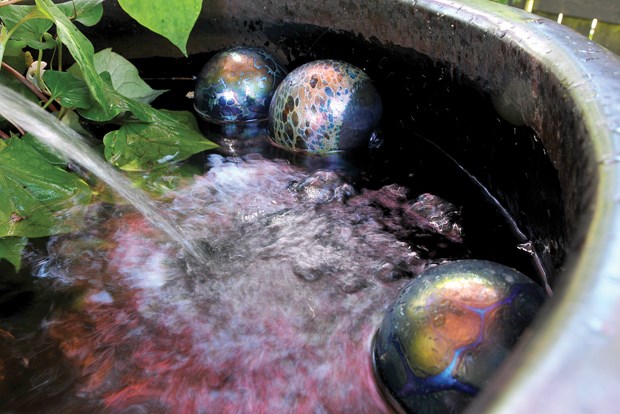During the course of my work I am often asked to visit the private gardens of professionals and hobbyists alike.
It's a nice perk that goes along with the job. I drop in for a visit, enjoy a glass of wine and enjoy a garden walk in someone else's creation.
It's an inspiring experience and as a garden builder the stimulation and exposure fuses deep into the green recesses of my subconscious mind, changing and enlightening my ideas.
The gardens I've seen this year are showing a diverse range that uniquely expresses each owner's creativity.
Many of the most intriguing gardens I've seen were created by hobbyists who do not have technical training but have a passion for gardening.
Here's a snapshot of some of the trends in this year's gardens of summer.
Camping in the backyard
This is an old school style that is still relevant and popular today, especially with younger gardeners and older hippies. Using low-cost materials, which are often repurposed, the illusion of a campground is created. By using logs, boulders, a bit of sand or gravel, and some cedar or fir trees underplanted with sword ferns, a simple design can be created. Enhancements I've seen include an old car modified to act as seating and a fridge. Also an old wood boat complete with holes made into a half bench seat and half sun cover. And a worn-out potbelly stove that acted as a fire pit of sorts.
The options are only limited by your imagination and memories of camping as a child.
Healing gardens
Although not new, such gardens are becoming popular and act as places of sanctuary, discovery and rejuvenation for people with long-term illnesses or disabilities. Many of the healing gardens I have seen are quite simple, nothing like the grandiose creations often seen in public healing gardens.
Some of the key healing garden features include: plants of nostalgia to tingle the emotions; elements designed and suited to the user's physicality; use in as many seasons as possible; plants that provide colour and fragrance for stimulatory effects on mind and body; and the use of water to hear or touch to provide powerful relaxation benefits.
The newest offshoot of the healing garden theme is the professional's retreat, which calms and heals the tired mind. Designed specifically for busy professionals to recharge and relax, the design includes many creature comforts and is built for year-round use.
Insect hotels
There's a grassroots movement of people caring more about the environment and its creatures. Bug hotels are one way of helping bees and other insects to find a home over the winter. I have seen more than a dozen of these creations lately - all of them quite visually interesting. Often made from old cabinets, sometimes newly built cedar cupboards are constructed to hold an array of beds for bugs.
The individual bug rooms are made from pots, sticks, plant stalks, jars, plastic signs, pieces of terra cotta, straw, hollow tubes and so on. The idea is to create a covered structure that holds a multitude of items that insects can sleep in over the winter. You have to be a bug-friendly person to have one in your yard. But if you do you will be blessed with more uniform and sustainable insect control in the garden. Not to mention there may be some extra honey around to enjoy.
Food for life
One of my friends recently commented that, "Gardening is a life skill. Once you learn how to grow plants, it becomes a skill for life and you'll never go hungry."
Food gardening at home has been popular for years. As the trend continues, it seems that any free space is fair game for growing fruits, veggies or a few herbs. Growing veggies in pots is more popular with people in apartments and condos than people with land to grow on. I've seen some cool veggie growing creations lately; for example, a runner bean plant that spanned two adjacent apartment balconies. Another hungry gardener planted strawberries in all of her hanging baskets instead of flowers. Another fellow built two greenhouses on the sides of his house. Although the greenhouses are small, he still manages to grow lettuce year-round as well as chives, peas and tomatoes in summer, and several herbs and a lemon tree.
Trends are one thing, sometimes they are worth following and sometimes not. The most important factor is to choose a style or theme that provides for your specific needs. Do not be worried about how anyone else builds their garden.
Create a garden to provide features that fit your lifestyle and reflect your personal taste. After all, individuality is the genesis of creativity.
Todd Major is a journeyman horticulturist, garden designer and builder, teacher and organic advocate. [email protected]



